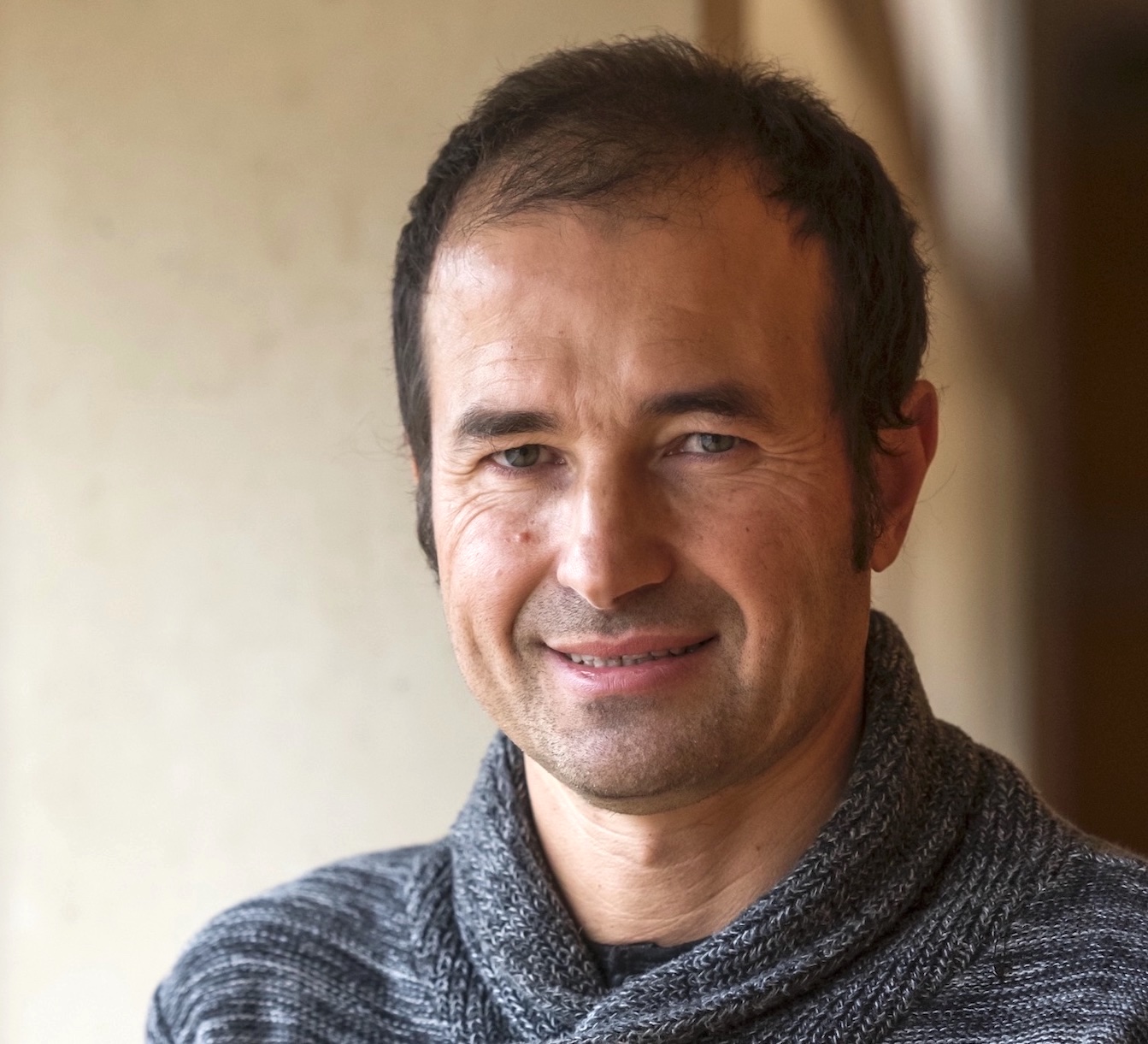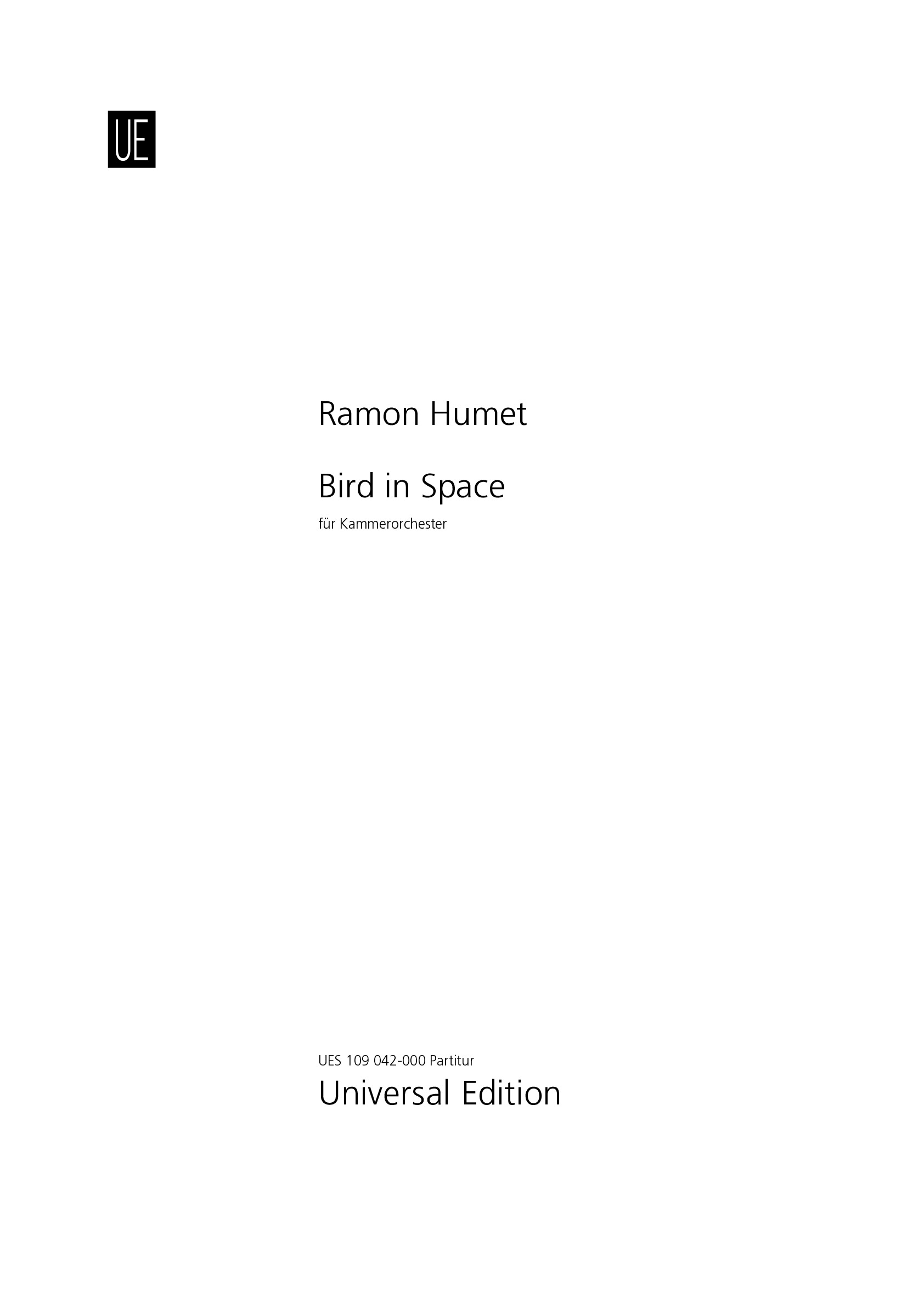

Ramon Humet
Bird in Space
Short instrumentation: 2 1 2 0 - 2 1 0 0, timp, perc, str
Duration: 16'
Instrumentation details:
flute
piccolo (+fl)
oboe
clarinet in Eb
bass clarinet
1st horn
2nd horn
trumpet in C
timpani
percussion
violin I (6 players)
violin II (6 players)
viola (4 players)
violoncello (4 players)
double bass (2 players)
Bird in Space
Sample pages
Audio preview
Video
Work introduction
Bird in Space has been awarded the 3rd Prize in the Basel Composition Competition 2025. The work was premiered by the Basel Chamber Orchestra conducted by Tito Ceccherini on January 30, 2025.
Imagine a very big, huge cathedral, bigger than any other cathedral in the world. Now imagine a little bird flying inside the cathedral and stopping on a balcony. There it begins to sing. What do we hear? Short, granular sounds create a very long reverberation tail that merges with space. The bird does not sing in its natural terrain, in the open air, where the reverberation is reduced to almost zero. On the contrary, the immense space of the cathedral creates a sound cushion that expands in time and contrasts with the fast and vivid sounds.
What if the dimensions of this cathedral were infinite? What if the building's architectural space occupied the entire known and even the unknown universe? What about the reverberation time in the infinite space of this cathedral? What about the bird singing an agile, energetic tune from a balcony of this cathedral with infinite reverberation? I like to imagine the conceptual clash between the extremely fast and light sound of the bird, and the response time of the reverberation that lasts to infinity. The granular song of the bird responds to a tail of reverberation that dissolves time, becoming an evocation of eternity.
The wind instruments section evokes finite, temporary, agile, and energetic counterpoint singing. Sometimes even the soloists of the strings also perform this melodic function, elaborating a counterpoint of birds singing in a forest inserted inside a cathedral. Instead, the whole string section elaborates the infinite reverberation by freezing the melodies and counterpoints of the wind section. The harmonies generated by the reverberation of the birdsong appear as eternal shadows of an earthly origin.
The six-note melody that initially features the Eb clarinet and that appears during the eight movements of the work comes from the analysis of a birdsong characteristic of South America, the turpial (Icterus Icterus). The first movement (I. Bird in Space) presents the singing of the turpial inside the infinite cathedral. In the second movement (II. Birds) a flock of birds sings in a dry environment, without reverberation. The third movement (III. Bird in Space) is reminiscent of the initial turpial but this time in a dull, tenuous atmosphere. The fourth movement (IV. Space) presents space without singing, a speculation of how an infinite space resounds without any sound focus. In the fifth movement (V. Birds in No Space) the birds sing in a non-space, the opposite of infinite space. The sixth movement (VI. No Space) introduces the sound of non-space. In the seventh movement (VII. No Bird) the resonances of the string section evoke the absence of a bird. In the eighth movement (VIII. No Bird, No Space) the absence of a bird and space give rise to a melody without measure that evokes, from a distance, the initial birdsong.
Movements:
I. Bird in Space
II. Birds
III. Bird in Space
IV. Space
V. Birds in No Space VI. No Space
VII. No Bird
VIII. No Bird, No Space

